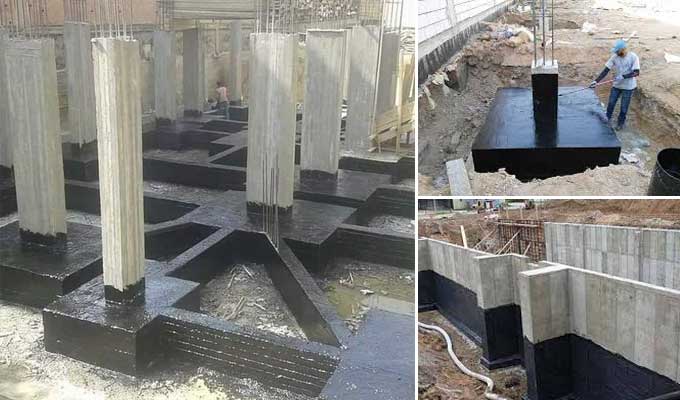
Overview of Bituminous Paint and their Properties and History
Various structural elements require different types of bituminous paint to waterproof, resist corrosion, and do damp-proofing. Bitumen or coal tar dissolved in mineral spirits or naphtha then applied in liquid or semi liquid form to structures.
In addition to providing a seal against water ingress, bitumen coatings with a natural in soluble nature serve as effective repellents. Bitumen's inherent water resistance, combined with its high adhesive properties, makes it a great barrier to corrosion by not allowing air or moisture to come into contact with the coated substrate.
History of Bitumen
Objects containing crop storage baskets lined with natural bitumen were found in Mehrgarh in the Indus Valley Civilization, with traces of this material dating back to 5000 to 4000 BC. The Great Bath, Mohenjo-Daro, was also waterproofed with bitumen, based on findings in the same region, between 3000 BC and 2000 BC.
In the ancient Middle East, bitumen was also used in bricklaying, caulk, and ship waterproofing. Nowadays, harsh industrial environments and an increasing need for waterproofing and protection of various types of structures have made bitumen an important component of modern society.
Definition of Bitumen
Despite its black appearance, bitumen is sticky, thick, and thick, similar to molasses in viscosity. Petroleum in this form typically finds as a liquid or semi-solid in natural undersea deposits or as a refined product, called pitch.
It is hydrophobic by nature. Water cannot mix with it easily. Due to this property, bitumen-based paints and coatings are suitable for waterproofing a wide range of objects and structures.
Properties of Bituminous Paint
- It is possible to increase the elasticity and durability of bituminous paints by using polyurethane or acrylic polymer materials. It is alkaline-resistant to use bituminous paint.
- Bituminous paints provide an excellent barrier to air and moisture penetration due to their good adhesive properties.
- Paint made from bituminous polymers can resist harsh chemicals, UV light, and manufacturing chemicals, allowing it to stay strong, waterproof, and durable.
- Paints containing bituminous compounds prevent surfaces from rusting.
- Bituminous paint generally covers 10 square meters per liter on metal and smooth surfaces.
- It is possible to apply bituminous paint without thinning it with a brush or a sprayer. This paint is fast drying and economical.
Surface Preparation for Bituminous Paint
Surface preparation plays a crucial role in determining the adhesion and the performance of any paint or coating. To apply bituminous paint, you should ensure that all surfaces are clean, dry, and free from dirt, grease, rust, mill scale, and another residue.
Before applying a bituminous paint, you should also remove any loose or blistered existing paint.
If your metal substrate is corrodible, you can clean it using a wire brush or sandpaper by thoroughly scrubbing it. Depending on the size of the surface, shot blasting, sanding machines or other mechanical methods care to ensure that flash rusting does not occur.
For harsher environments, such as marine environments, long-term corrosion protection might be imperative. For this purpose, an anti-corrosive primer may apply. Concrete and wood are also suitable substrate materials for surface preparation. The first coat of bituminous paint applies after removing residual dust from cleaning operations with compressed air.
Applications of Bituminous Paint
Asbestos cement sheeting, iron, steel, and metal structures coated with bituminous paint. Ferrous and non-ferrous metals can coat with bituminous paint for use in marine environments. This coating can apply below as well as above ground.
Wrapping it Up
Coatings made of bituminous materials work well to waterproof and protect metals from corrosion. Water naturally repels it, so it effectively creates a barrier between vulnerable substrates and moisture. That is due primarily to its hydrophobic property.
Bituminous coatings also provide durability, flexibility, and resistance to chemical and UV attacks, making them the ideal choice for protection against harsh outdoor weather.
To get more details, watch the following video tutorial.
Video Source: Civil&Architecture Site works


